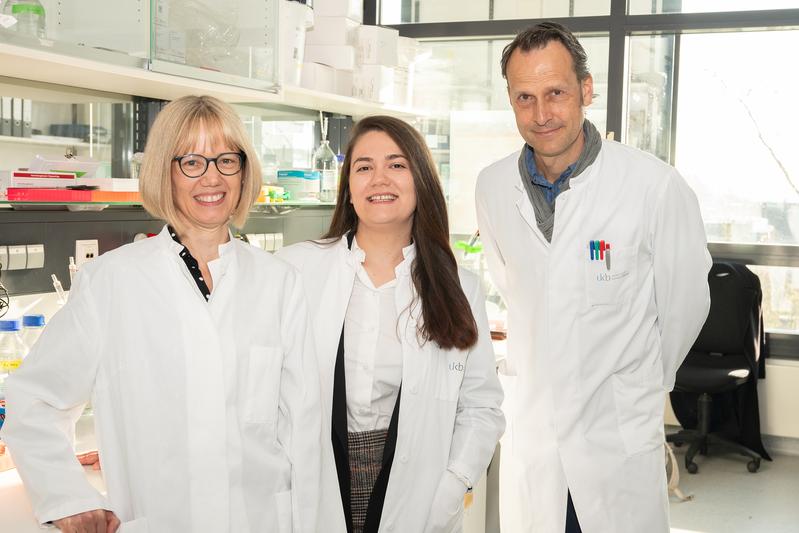Insights into dopamine in focal cortical dysplasia: How disturbed signaling pathways could promote epileptic seizures
Bonn, April 16, 2025 - Focal cortical dysplasia (FCD) type 2 is a congenital malformation of the cerebral cortex that is often associated with difficult-to-treat epilepsy. In the affected areas, nerve cells and their layer structures are arranged in an atypical manner, which often makes drug therapy more difficult. A research team from the University Hospital Bonn (UKB) and the University of Bonn, in collaboration with the German Center for Neurodegenerative Diseases (DZNE), has now found evidence of profound changes in the dopamine system in FCD type 2. The results have now been published in the medical journal “Brain”.
Dopamine is a central neurotransmitter that regulates attention, learning and the excitability of neuronal networks, among other things. Whether and how this system is affected by FCD has so far remained largely unclear. The current study shows that the dopaminergic supply in the affected brain areas is altered. In addition, an increased expression of certain dopamine receptors was observed – both in human tissue and in a corresponding mouse model.
Evidence of disturbed modulation in the developing cortex
“Our data suggest a disrupted dopaminergic system in FCD type 2,” explains Norisa Meli, a doctoral student at the University of Bonn at the Institute for Reconstructive Neurobiology at the UKB and first author of the study. ”Particularly striking was the significantly increased expression of dopaminergic receptors in the neurons that are central role to the disease process.”
These changes could play a role in the development of epileptic seizures – and possibly also explain why many sufferers also experience concentration problems or mood swings.
“Dopamine modulates the excitability of neuronal networks and their formation in the developing cortex,” emphasizes Prof. Sandra Blaess, Professor of Neurodevelopment at UKB and member of the TRA ‘Life & Health’ at the University of Bonn. ”Our results show that this modulation may be disturbed in FCD type 2 – an aspect that has hardly been investigated to date.”
Prof. Albert Becker, Head of Department at the Institute for Cellular Neuroscience II at the UKB and also a member of the TRA “Life & Health” at the University of Bonn, adds: “These findings broaden our understanding of the complex neuropathology of dysplasias. They provide important clues for new potential therapeutic approaches that could go beyond the mere control of seizures.”
The study combines comprehensive molecular analyses of human tissue samples with a preclinical mouse model that replicates the genetic changes in FCD type 2. The researchers hope that these results will contribute to more targeted and effective treatment strategies in the long term.
Funding: The work was funded by the German Research Foundation, the BONFOR program of the Medical Faculty of the University of Bonn, the iBehave project (Netzwerke 2021 - an initiative of the Ministry of Culture and Science of the State of North Rhine-Westphalia). In addition, the work was supported by the Epilepsy Surgery Biobank of the Medical Faculty of the University of Bonn and the Open Access funding of the University of Bonn.
Publication: Norisa Meli et al.: Alterations in dopaminergic innervation and receptors in focal cortical dysplasia; DOI: https://doi.org/10.1093/brain/awaf080
Wissenschaftlicher Ansprechpartner:
Prof. Sandra Blaess
Institute for Reconstructive Neurobiology
University Hospital Bonn
TRA “Life & Health”
University of Bonn
Sandra.Blaess@ukbonn.de
Prof. Albert Becker
Institute for Cellular Neuroscience II
University Hospital Bonn
TRA “Life & Health”
University of Bonn
Albert.Becker@ukbonn.de
Originalpublikation:
Norisa Meli et al.: Alterations in dopaminergic innervation and receptors in focal cortical dysplasia; DOI: https://doi.org/10.1093/brain/awaf080
Ähnliche Pressemitteilungen im idw


